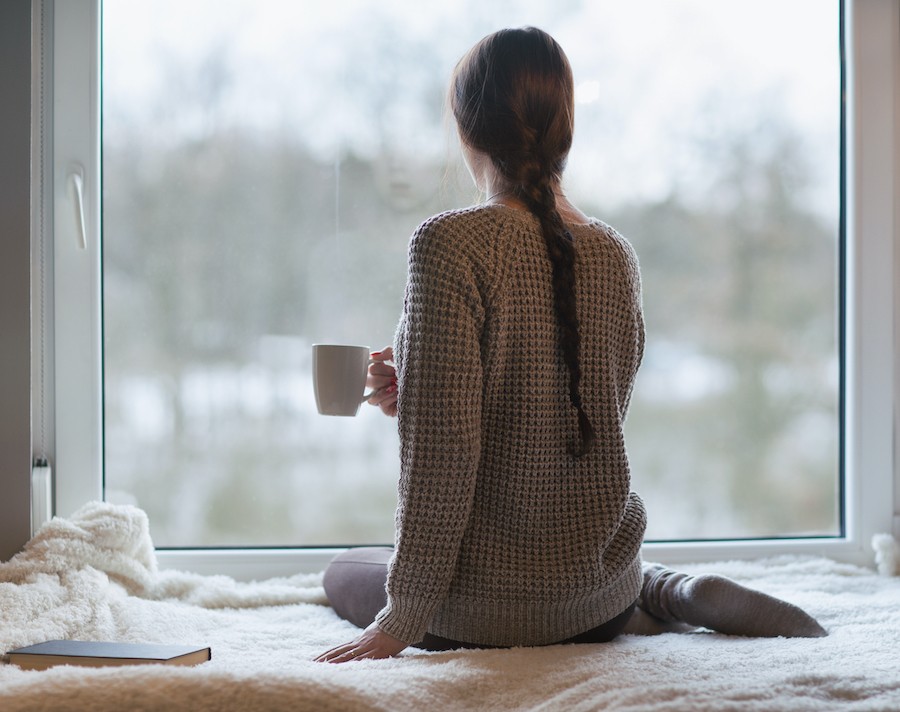CBT tips to tackle seasonal affective disorder.

According to research commissioned by The Weather Channel and YouGov, 29 per cent of adults’ experience symptoms of SAD during this time of year. As the end of daylight savings time quickly approaches, the UK’s leading CBT provider – Onebright; are keen to share some of their top tips to tackle seasonal affective disorder and some of its associated symptoms.
What is SAD?
Mental health charity MIND describes seasonal affective disorder as a “type of depression that you experience during particular seasons or times of year.” SAD sufferers commonly experience lack of energy, difficulty concentrating, feelings of wanting to withdraw from family and friends, sleep problems and feelings of sadness, guilt or hopelessness.
Although 57 per cent of adults surveyed stated that their overall mood took a turn for the worst during the winter months compared to summer, SAD can also affect people in the summer months.
How can CBT help with SAD?
When addressing symptoms related to seasonal affective disorder, CBT works by challenging the sufferer’s perceived negative thoughts and opinions of a season. For example, if a patient expressed that they hated winter and believed that they were not able to go out and do the things they liked to do when it was cold and dark, a CBT therapist will work together with the patient to shift their perspective of winter.
A CBT therapist will encourage you to evaluate the feelings you get when you think about the winter months and also challenge your misconceptions of what you believe you can do during this time.
CBT tips for SAD
As a lead provider of cognitive behavioural therapy in the UK, Onebright has shared their top five CBT tips to help people suffering with SAD.
1) Recognise the signs of seasonal affective disorder and how it affects you:
There is no doubt that if you persistently suffer from SAD, you naturally tend to dread the specific time of year that causes you anguish. However, it can sometimes be hard to pinpoint a reason for your change of mood or even realise that you could be suffering from SAD.
While “traditional” depression usually comes with sleeping problems and reduced appetite, SAD is associated with a yearning to “hibernate”. People affected have a strongly increased desire to sleep and eat, with a craving for carbohydrates, comfort food and sweet treats very common for SAD sufferers.
2) Maximise your exposure to light:
With technology moving at an exponential rate, there are plenty of devices on the market which has been specifically created to counteract the effects of SAD. Most common is the range of SAD LED/blue light therapeutic lamps. The theory behind conventional Full Spectrum (White Light) lightboxes is that they effectively replicate sunshine. As a result, it gives the user a positive response when they lack sunshine.
3) Healthy Diet:
Eating a healthy and balanced diet is crucial to enable every part of the human body to function optimally. A healthy and balanced diet will also affect your dopamine and brain hormone levels to regulate and “balance” where possible any in-balance.
4) Manage Stress:
Being able to keep your levels of stress manageable is a challenge most of us face on a daily basis. A culmination of tight deadlines at work, personal stressors at home and SAD could prove to push your stress levels into overdrive. In this instance, Onebright suggests sufferers try to take action to manage stressful situations more constructively, where possible.
This could include, ‘time out periods’ where you recognise and remove yourself from issues of conflict, friction and raised anxiety. After taking steps to calm down (e.g. slow breathing, meditation, mindful awareness techniques) try some CBT coping techniques, such as active problem solving, breaking tasks into small steps, delegating tasks someone else could do. Thinking through our impact on others and how we might try something different can work wonders when working towards achieving a better outcome and healthy mental health.
5) Opt for CBT treatment:
As an evidence-based form of therapy, CBT is hugely effective when addressing symptoms of depression and anxiety, which is prevalent amongst SAD sufferers. As an organisation that achieves an 86 per cent recovery rate for patients that complete their therapy, Onebright is keen to make people aware of the benefits CBT can have for anyone experiencing SAD.
If you or someone you know suffers from seasonal affective disorder, call Onebright today to speak to one of their BABCP accredited therapists.
